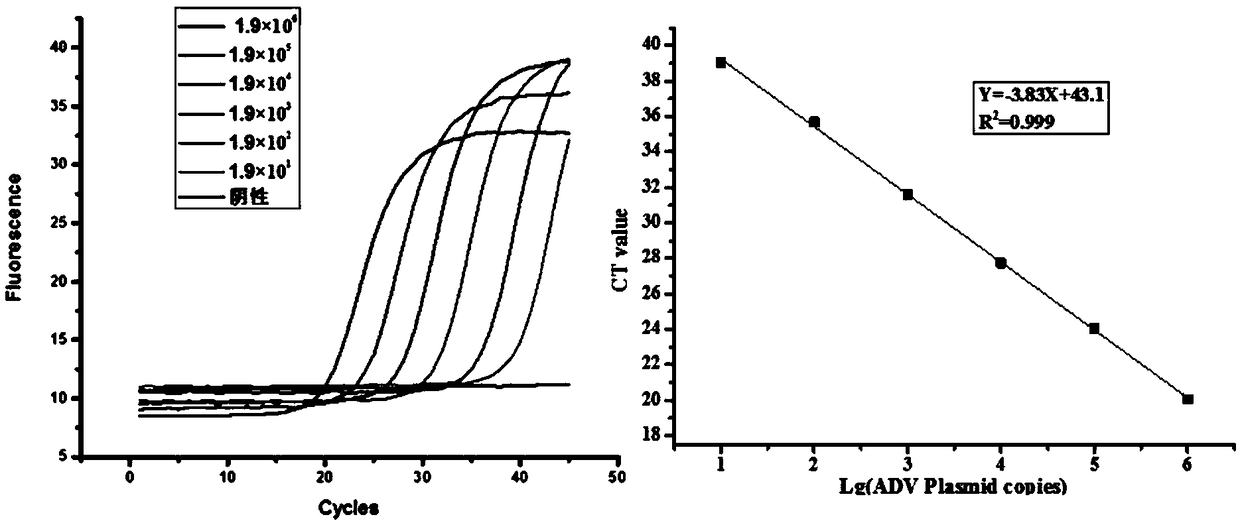Primer group, kit and method for detecting respiratory pathogens
A pathogen and respiratory technology, applied in the field of respiratory pathogen detection, can solve the problems of large impact on results, inability to distinguish contamination and colonization bacteria, long time consumption, etc., to reduce the cost of detection and avoid limited detection channels.
- Summary
- Abstract
- Description
- Claims
- Application Information
AI Technical Summary
Problems solved by technology
Method used
Image
Examples
Embodiment 1
[0070] The primer set for detecting respiratory pathogens provided in this embodiment includes the first primer pair-the thirteenth primer;
[0071] Wherein, the first primer pair includes the primers shown in SEQ ID NO.1~2, the second primer pair includes the primers shown in SEQ ID NO.3~4, and the third primer pair includes the primers shown in SEQ ID NO.5~6. primers, the fourth primer pair includes the primers shown in SEQ ID NO.7-8, the fifth primer pair includes the primers shown in SEQ ID NO.9-10, and the sixth primer pair includes the primers shown in SEQ ID NO.11-12 The primers shown, the 7th primer pair includes the primers shown in SEQ ID NO.13-14, the 8th primer pair includes the primers shown in SEQ ID NO.15-16, the 9th primer pair includes the primers shown in SEQ ID NO. The primers shown, the 10th primer pair includes the primers shown in SEQ ID NO.19-20, the 11th primer pair includes the primers shown in SEQ ID NO.21-22, and the 12th primer pair includes the pri...
experiment example 1
[0097] (1) Specificity verification
[0098] Use each respiratory pathogen plasmid standard to do a cross experiment to verify its specificity
[0099] Taking RSV as an example, add the same primer pair to the wells of the same row of PCR 8-tube tubes (only 1 pair of primers is added to each tube, a total of 13 rows, and rows 1-13 correspond to the added primer pair respectively as the first primer Pair - the 13th primer pair), the same RSV positive plasmid (ie, the PUC57 plasmid containing the RSV conservative sequence) template was added to the same row of wells to ensure that each primer pair had independent contact with any of the 13 respiratory pathogens Opportunity, through such a crossover experiment, count each CT value, and verify the specificity of the primers.
[0100] The reaction solution configuration method is as follows: 1X PCR reaction master mix containing SYBR Green I; 300nM upstream primer; 300nM downstream primer; 0.2unit uracil-DNA glycosylase (UNG enzym...
experiment example 2
[0112] Experimental example 2 uses other control primers to carry out the crossover experiment as shown in Table 6 below: Since SYBR is a non-specific dye, these control primers show more non-specific amplification in the crossover experiment. This shows that the first primer pair-the thirteenth primer pair of the present invention is used to detect respiratory pathogens such as respiratory syncytial virus, adenovirus, human metapneumovirus, rhino / enterovirus, parainfluenza virus, coronavirus, boca virus , Influenza virus A, Influenza virus B, B. pertussis, B. parapertussis, Mycoplasma pneumoniae and Chlamydia pneumoniae have high specificity.
[0113] The sequence of the control primer corresponding to each virus is supplemented in turn:
[0114]
[0115] Table 6
[0116]
[0117] It can be seen that the first primer pair-the thirteenth primer pair of the present invention are used to detect respiratory pathogens such as respiratory syncytial virus, adenovirus, human m...
PUM
| Property | Measurement | Unit |
|---|---|---|
| Sensitivity | aaaaa | aaaaa |
| Sensitivity | aaaaa | aaaaa |
Abstract
Description
Claims
Application Information
 Login to View More
Login to View More - R&D
- Intellectual Property
- Life Sciences
- Materials
- Tech Scout
- Unparalleled Data Quality
- Higher Quality Content
- 60% Fewer Hallucinations
Browse by: Latest US Patents, China's latest patents, Technical Efficacy Thesaurus, Application Domain, Technology Topic, Popular Technical Reports.
© 2025 PatSnap. All rights reserved.Legal|Privacy policy|Modern Slavery Act Transparency Statement|Sitemap|About US| Contact US: help@patsnap.com



